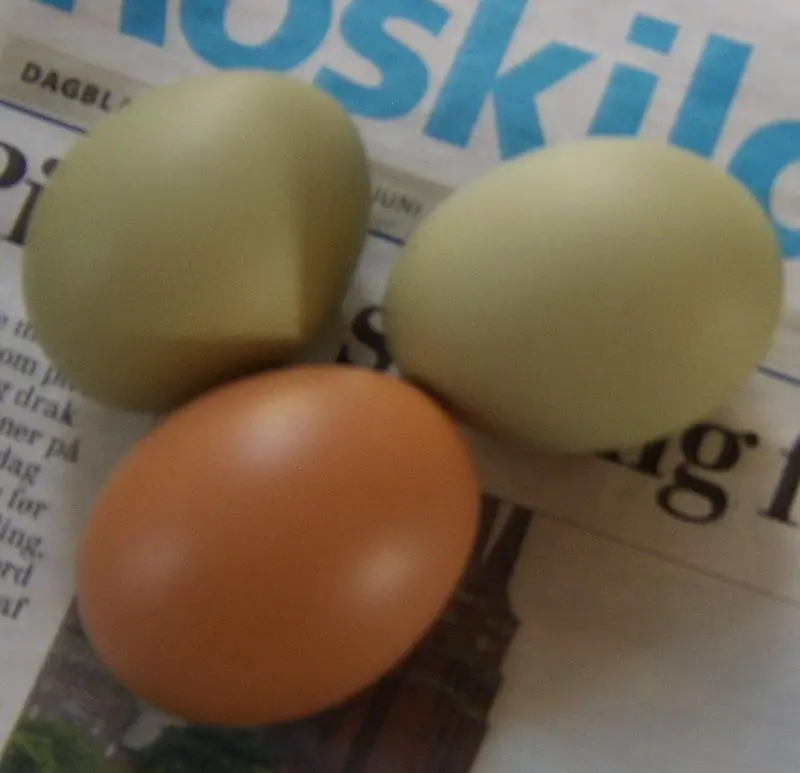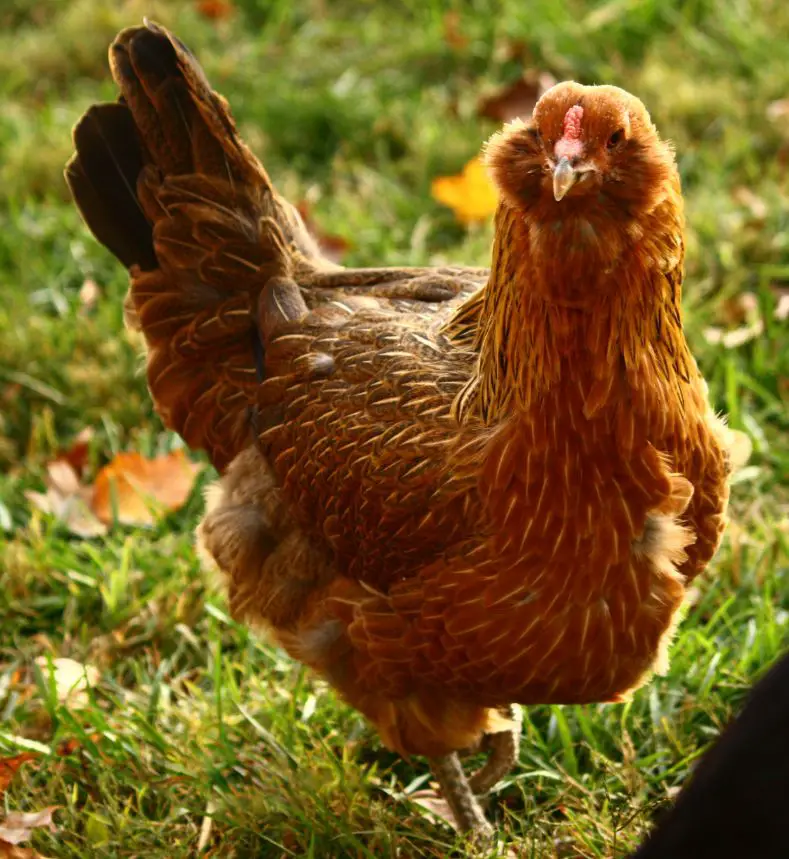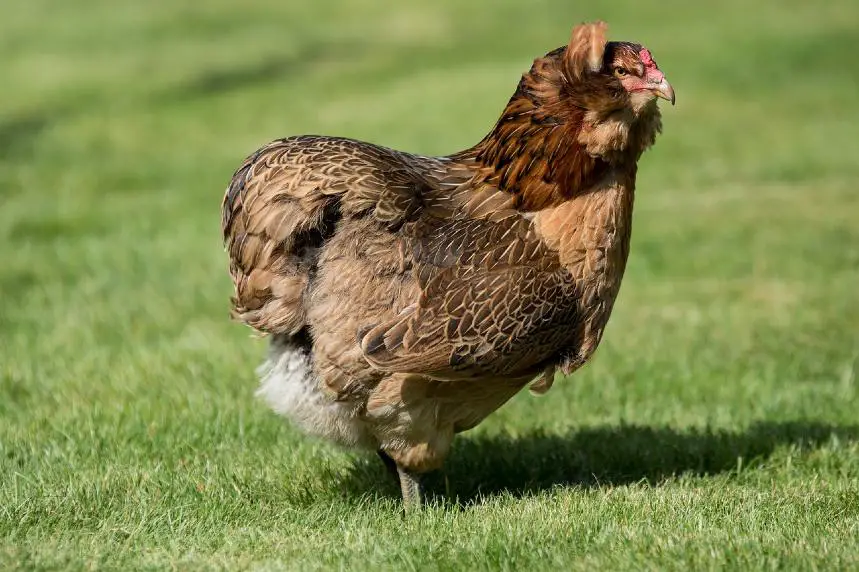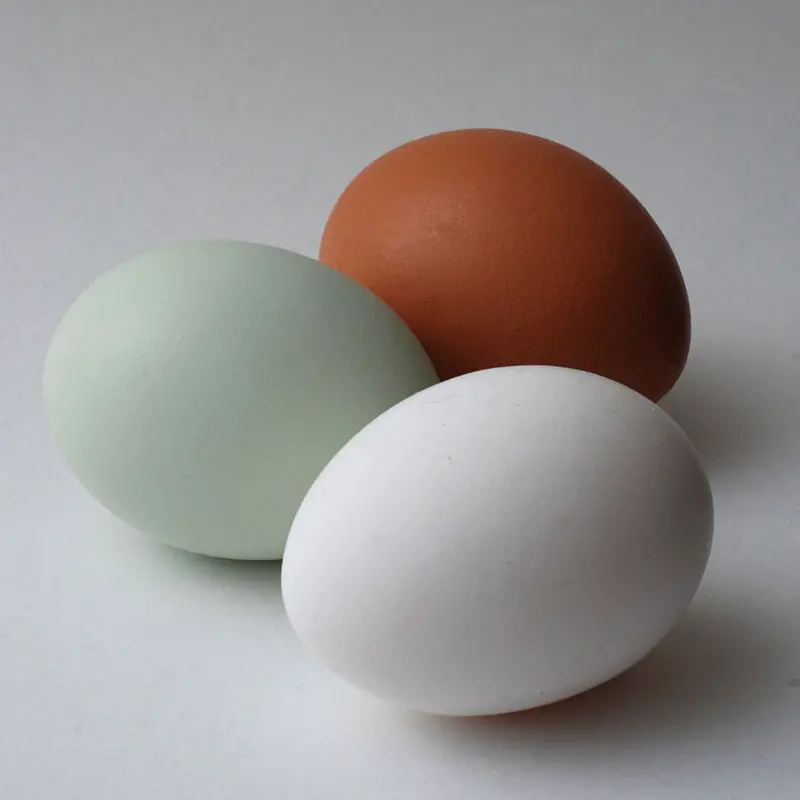Did you know that there are breeds of chickens that lay blue eggs? Let’s take a look what is the difference between Ameraucana vs Araucana vs Easter Egger. On this page we are going to discuss what are the main differences between these three breeds.
What Chickens Lay Blue Eggs?
Many people ask ‘which chickens lay blue eggs?’. Well, Ameraucana and Araucana and the Easter Egger are most famous by the fact that they are chickens that “lay blue eggs”.
However, let’s clarify something from the begging; Easter Egger is not a chicken breed, but the term is used to refer to all breeds of chickens that lay blue eggs or any variety of pretty shell colors. They are not recognized by the American Poultry Association‘s standards.
The variety of pretty shell colors of the Easter Egger can range in shades from green to greenish blue.
That being said, the Ameraucana and the Araucana are the only two recognized chicken breeds that lay blue or green eggs.
Now, lets take a look and see what are the differences between Ameraucana and Araucana.
Ameraucana vs Araucana at a Glance
| Ameraucana | Araucana | |
|---|---|---|
| Eggs (per year) | 200–300 | 250 |
| Egg Color | Blue in various shades | Blue or green |
| Temperament | Docile | Docile |
| Use | Eggs + Meat (dual purpose) | Eggs + Meat (dual purpose) |
| Skin Color | Yellow | White |
| Foraging | Good | Good |
| Comb Type | Pea | Pea |
| Broody | Yes | Yes |
| Weight | Male Standard: 5.5-6.5 lb (2.5-2.9 kg) Male Bantam: 26-30 oz (740-850 g) Female Standard: 4.5-5 lb (2-2.5 kg) Female Bantam: 24-26 oz (680-740 g) | Male Standard: 5.9-7 lb (2.7-3.2 kg) Male Bantam: 26-30 oz (740-850 g) Female Standard: 4.8-6 lb (2.2-2.7 kg) Female Bantam: 24-28 oz (680-790 g) |
| Country of origin | United States | Chile |

Ameraucana 
Araucana
Ameraucana and Araucana Differences
Back in the begging of the last century, it was considered that the “blue egg” of the Araucana is a unique among all chicken breeds. However, later in 1970s in the US, the Ameraucana was developed with the intention to develop a new breed without the lethal gene of the Araucana (that can cause the early death of chicks).
Araucana and Ameraucana chickens are two types of breeds that both lay blue eggs. They are both dual-purpose birds, meaning they can be used for meat or egg production, but there are some subtle differences between these breeds that may make a difference in your decision to keep one or the other around on your farm.
The Ameraucana is a smallish bird. It is tough to find a rooster over 6.6lbs in weight and a hen over 5.5lbs. This means that if you are going to be getting some Ameraucana as your backyard chickens, then they are not going to be making a very good meat source. The Araucanas are slightly bigger, a rooster can be up to 7lbs in weight and a hen around 6lbs.
Both breeds comes as large or bantam and both have a pea comb, that can come in different color varieties.
The Ameraucana has a tail, it is muffed and bearded. The Araucana with its eye-catching ear tufts on the other hand is “rampless”. They are famous for their lack of a tail. This is one of most distinguishing physical features of the Araucana compared to the Ameraucana.
It is worth noting that the hens of both breeds tend toward broodiness.
Ameraucana vs Araucana Recognized Color Varieties
Ameraucana vs Araucana Colors Varieties Recognized by APA
Ameraucana Colors:
- Black
- Blue
- Blue Wheaten
- Brown Red
- Buff
- Silver
- Wheaten
- White.
Araucana Colors:
- Black
- Black breasted red
- Golden Duckwing
- Silver Duckwing
- White.
Easter Egger vs Ameraucana vs Araucana Eggs
As said earlier, the Easter Egger chickens have not a clear blood line like Ameraucana or Araucana, so they are lacking the standards needed to be recognized by APA. Their egg colors can range in shades from green to greenish blue, from brown to pinkish, and from white to pale yellow or gray.
The Easter Egger Chickens have a dominant “blue egg” gene compared to the white, while with a mix of genes for brown eggs, various shades of green and olive are produced.
Here is a Easter Egger egg compared to the standard brown and white egg.

Easter Egger Egg vs standard brown and white egg 
Araucana eggs compared with a brown egg.




